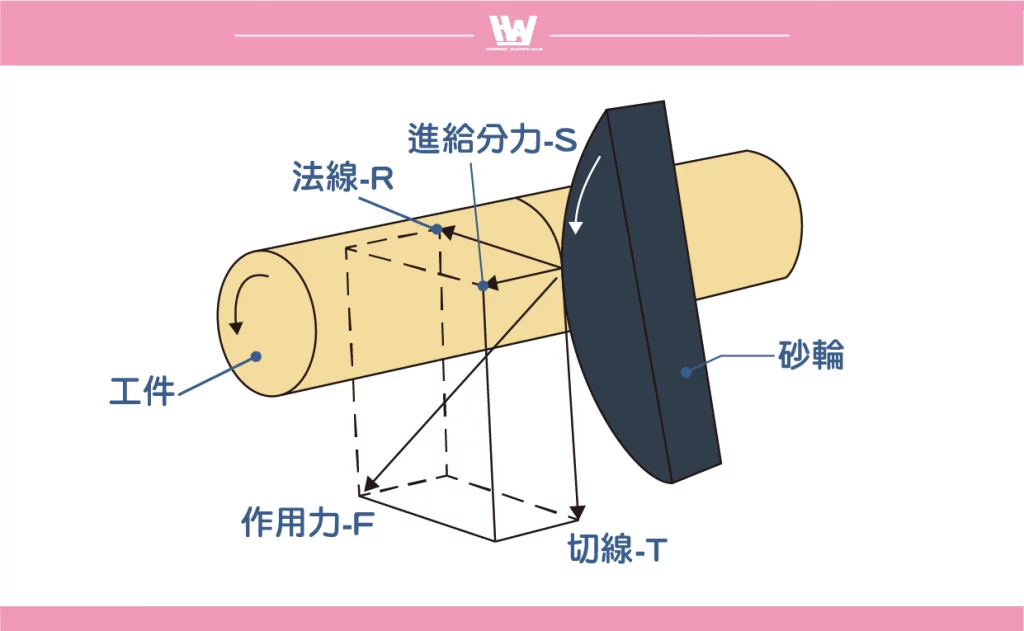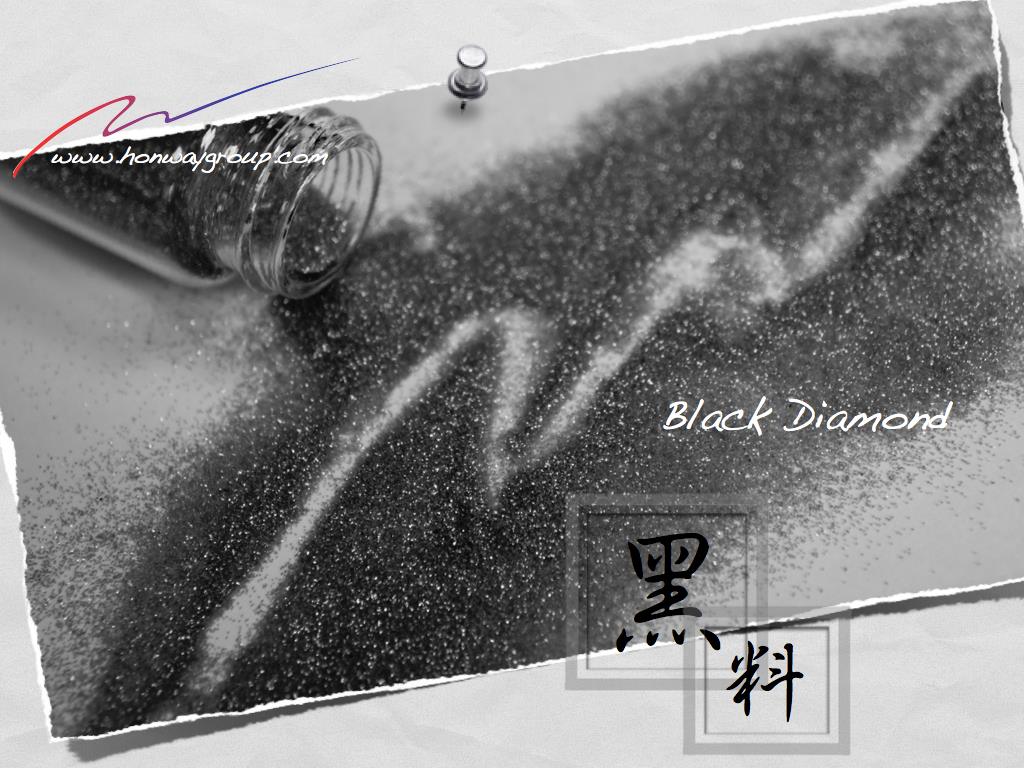Grinding is a high-precision surface machining technique widely used in the precision manufacturing of various materials such as metals, ceramics, and semiconductors. During the grinding process, the interaction between the grinding wheel and the workpiece generates grinding resistance, which not only affects grinding efficiency but also directly impacts machining accuracy, surface quality, and grinding wheel life. Therefore, in-depth exploration of the sources, influencing factors, and control methods of grinding resistance is crucial for improving grinding technology and machining stability.
This study introduces what grinding resistance is and explores its generation mechanism, decomposing it into tangential grinding force and radial grinding force, and analyzes its effects on grinding heat, mechanical stiffness, and machining accuracy.
Table of Contents
What is Grinding Resistance?
During the grinding process, when the grinding wheel contacts and cuts the workpiece, forces and counterforces are generated between the two. This force is called grinding resistance.
Causes of Grinding Resistance
When the grinding wheel grinds the workpiece, various deformations occur when the abrasive grains’ cutting edges contact the workpiece. Common resistances include:
- Elastic Resistance: The resistance generated by the elastic deformation of the workpiece surface when the abrasive grain indents into it.
- Plastic Resistance: The resistance generated when the abrasive grain presses into the workpiece surface, causing plastic deformation.
- Shear Resistance: The resistance generated by shear deformation within the material when material is removed to form chips.
- Frictional Resistance: The frictional force generated when the worn surface of the abrasive grain contacts the workpiece surface. This is related to the wear state of the grinding wheel and the surface condition of the workpiece.
What are the Components of Grinding Resistance?

Grinding resistance is not a single force acting in one direction on the grinding wheel. Considering the grinding mechanism, grinding resistance is generally divided into three components: the direction of the grinding wheel’s rotation, the direction of the grinding wheel’s radius, and the grinding wheel’s feed direction:
Tangential Grinding Resistance (T, Tangential Force) – Main Component
- Direction: Along the direction of the grinding wheel’s rotation.
- Effect: Directly proportional to the energy required for grinding, and thus closely related to power consumption. Often referred to as grinding power or power consumption.
- Measurement Method: Can be measured by using a power meter to measure the power consumption of the grinding machine and calculating using “Power ÷ Grinding Wheel Speed.”
Radial Grinding Resistance (R, Radial Force) – Back Force
- Direction: Perpendicular to the grinding wheel surface, acting along the grinding wheel’s radius.
- Effect: Affects workpiece deformation and vibration during machining, thereby influencing grinding accuracy and surface quality.
- Characteristics: Radial grinding resistance is usually greater than tangential grinding resistance, generally about 2 times its magnitude, and may increase to 4 times its magnitude when using non-water-soluble grinding fluids. Due to the larger radial force, higher demands are placed on grinding wheel life, mechanical stiffness, and equipment stability. When the grinding wheel’s abrasive grains are worn and the cutting edges are dulled, the radial grinding resistance will increase sharply, which may lead to ineffective grinding. This situation requires special attention and adjustment.
Feed Force (S, Feed Force)
- Direction: Along the direction of the grinding wheel’s feed.
- Effect: Usually smaller, so it receives less attention, but it still needs to be considered for high-precision grinding.
Main Influencing Factors of Grinding Resistance Magnitude
In the grinding process, the grinding resistance force measured at a certain point is the sum of the forces acting on all the abrasive grain cutting edges currently in contact with the workpiece.
A simple calculation of the grinding resistance magnitude can be expressed as: (Number of abrasive grain cutting edges simultaneously involved in cutting × Average resistance force acting on a single cutting edge).
However, many factors influence the variation of grinding resistance. The following are common influencing factors:
- Number of acting abrasive grain cutting edges (influences total force)
- Magnitude of average resistance force on a single cutting edge (influences single-point force)
- Variation trends of the above two factors
※Note: These influencing factors are not independent of each other; they interact. For example, when the contact area between the grinding wheel and the workpiece remains constant, if the number of cutting edges involved in cutting decreases, the spacing between the cutting edges will increase. This, in turn, will increase the cutting depth of individual abrasive grains, leading to an increase in the resistance force acting on a single cutting edge.
What Influences the Number of Acting Abrasive Grain Cutting Edges?
As mentioned above, there are many influencing factors, one of which is the number of acting abrasive grain cutting edges. Contact area and density are important factors affecting the number of cutting edges:
- Contact Area Between Grinding Wheel and Workpiece
- Determined by the product of the contact arc length and the grinding width.
- Acting Cutting Edge Density
- Influenced by the type of grinding wheel (e.g., abrasive grain size, bond type) and dressing conditions.
- Influenced by grinding conditions (e.g., feed rate, depth of cut)
※Note: Because the grinding wheel continuously wears during the grinding process, the density constantly changes, making it difficult to calculate an accurate value.
Impact of Grinding Resistance on Machining
The impact of grinding resistance can be divided into tangential and radial directions:
- Tangential Grinding Resistance (T) Affects Grinding Heat
- Directly affects the generation of grinding heat, which in turn affects thermal alteration of the machined surface
- Excessive grinding heat can cause workpiece surface burns or material degradation.
- Radial Grinding Resistance (R) Affects Machining Accuracy
- Causes deformation of the grinding wheel, workpiece, and grinding wheel spindle, leading to reduced machining accuracy.
- Excessive deformation can lead to dimensional errors and deterioration of surface quality.
The ratio of tangential grinding resistance to radial grinding resistance affects the yield of the grinding process. High-efficiency grinding typically requires lower radial grinding resistance to reduce mechanical deformation and equipment load.
How Do We Ensure Machining Quality?
Because these factors have an interactive relationship, quantitative analysis of these changes can help us determine how the overall grinding resistance acting on the grinding wheel changes. In improving grinding processes, it is necessary to consider the interaction between the number of abrasive grains and the resistance on a single cutting edge to ensure the stability of grinding conditions and machining quality.
Conclusion
Grinding resistance is a key factor affecting efficiency, accuracy, and machining quality in grinding. It is mainly determined by the number of acting abrasive grain cutting edges and the average resistance force on a single cutting edge. These two factors do not change independently and require comprehensive consideration of factors such as grinding conditions, grinding wheel dressing state, and workpiece material.
Tangential grinding resistance (T) is directly related to grinding heat, affecting thermal alteration and material damage to the workpiece surface. Radial grinding resistance (R) affects the deformation of the grinding wheel, workpiece, and machine structure, thereby influencing machining accuracy and equipment life. The ratio of the two is important for the stability of the grinding process and machining yield.
Furthermore, the main factors affecting grinding resistance include the contact area between the grinding wheel and the workpiece, the acting cutting edge density, and grinding conditions. Because these factors interact and change complexly during the grinding process, it is impossible to judge the variation of grinding resistance by considering only one variable. Only through proper parameter adjustment, optimization of dressing conditions, and selection and application of appropriate cutting fluids can grinding resistance be effectively controlled, achieving efficient and stable grinding, ensuring workpiece quality, and extending grinding wheel life
Action
- Why does grinding generate heat?>>Grinding heat
- The basic knowledge of abrasives that must be known>>>Grinding-Abrasive Introduction
- The Key Role of Grinding Wheel Performance>>Bond
- Whether the current measured surface roughness meets your expected goals>>>Comparison Chart of Grinding Polishing and Surface Roughness
- Various aspects of grinding wheel abrasive grains>>The Grinding Effect of the Grinding Wheel Particles
- What to do if the surface is deteriorated>>In-depth analysis of grinding to avoid surface deterioration
- The surface is not rough, the light is not smooth>>What is surface roughness?
- Different grinding states of cutting edge>>In-depth understanding of grinding wheel cutting edge shapes, variations, and self-sharpening mechanisms
- Action>>>Diamond and CBN grinding wheel, Polishing abrasive, Polishing Equipment, Polishing Tools
- Review
We offer customized adjustments to the grinding process, tailored to meet processing requirements for maximum efficiency.
After reading the content, if you still don’t know how to select the most suitable option,
Feel free to contact us and we will have specialist available to answer your questions.
If you need customized quotations, you’re also welcome to contact us.
Customer Service Hours: Monday to Friday 09:00~18:00 (GMT+8)
Phone: +8867 223 1058
If you have a subject that you want to know or a phone call that is not clear, you are welcome to send a private message to Facebook~~
Honway Facebook: https://www.facebook.com/honwaygroup
You may be interested in…
- Nanofiber-Peptide Innovation: A Revolutionary Waterproof Paper to Replace Plastic
- Novel Gallium-Titanium Alloy: A Breakthrough in Enhancing Orthopedic Implant Performance
- Subtlety Comparison Table of Synthetic Diamond with Foreign Standards
- How to Expend the Lifespan of a Grinding Wheel? Grinding Conditions and Wear Calculations
- The Famous Twin Rare Earth Element Mystery – The Powerful “Neodymium” Magnet

